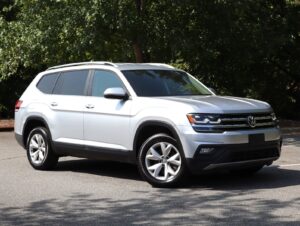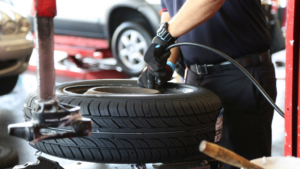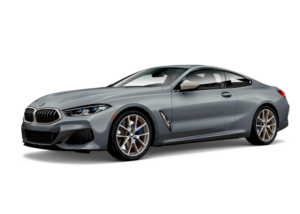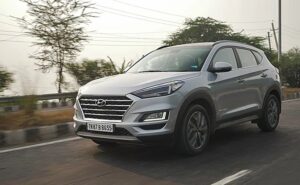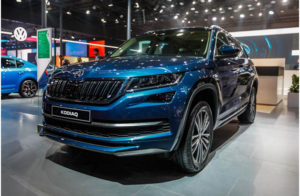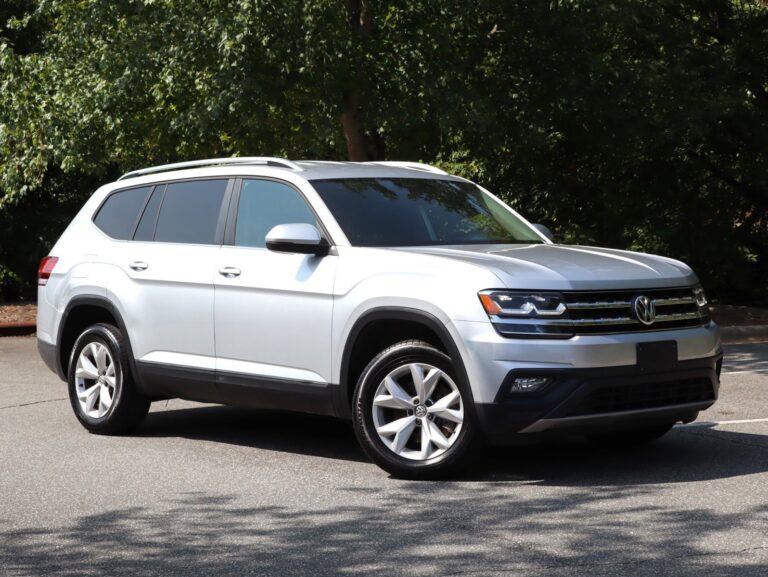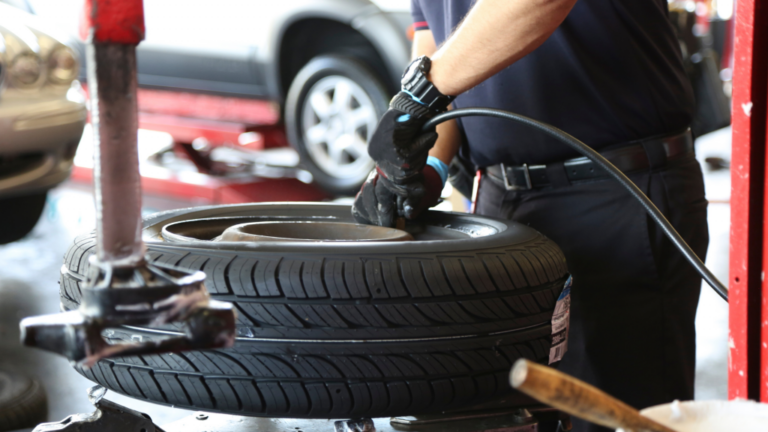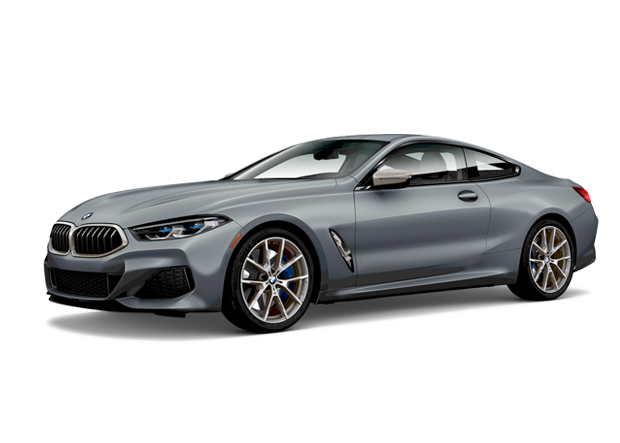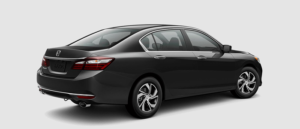While this year’s Auto Expo seemed a bit dull in comparison, there were a few standouts from the companies that showed up. Skoda’s biggest highlight was, of course, the Octavia RS 245, which, needless to say, grabbed the attention of every automotive enthusiast.
In the mix, however, there was a slightly modified version of the Kodiaq too. In fact, the Kodiaq was right next to the Octavia RS 245 in the snazzy blue shade you see above. However, the lack of any significant changes led the audience to perceive it as the standard Kodiaq. Or, as some might say, used as a space filler.
But there’s a catch. And the catch is beneath that sculpted bonnet. As the title suggests, the Kodiaq will be getting a petrol engine, for when the stringent BS-VI emission standards come into play next month. Sadly, however, Skoda is expected to discontinue the 2.0-litre TDI engine, which had been the sole engine under the Kodiaq ever since its launch in the Indian market. So, will the transition from a diesel-only model to a petrol-only one affect the sales numbers? We’ll have to wait and see. But here’s an overview of what exactly will it bring to the table.
Specifications
Surprisingly, however, there aren’t any changes to the exterior of the SkodaKodiaq that require mention. There’s a slight chance the company might revamp some bits and call it a facelift, but there’s no official confirmation on the matter so far. As for the dimensions, they are expected to be the same at 4,697mm of length, 1,882mm of width, and 1,665mm of height. The wheelbase and boot-space capacity, too, will remain the same at 2,791mm and 270-litres, respectively. The kerb weight will be lower, however.
Formerly a diesel-powered SUV, the Kodiaq is soon expected to feature a 2.0-litre TSI engine, which is capable of producing 188bhp and 320NM of torque. It will be paired to a 7-speed DSG gearbox as a standard fit. This also marks the end of the road for the 2.0-litre TDI engine, which will not be upgraded to meet the new emission standards. The Kodiaq will retain its all-wheel-drive layout, though.
Mileage
The BS-IV spec Kodiaq, with the diesel engine, delivered an overwhelming 16.25km/l of fuel efficiency. The BS-VI update, however, will see the fuel efficiency numbers take a toll since petrol-powered full-size SUVs have never been too enticing in this regard.
Features
The European SUV is, of course, loaded to the gills with nice-to-have features and equipment. While the 2020 update might see some revisions to this list, expect the Kodiaq to still be a decently-kitted car.
For reference, the L&K variant of the Kodiaq SUV comes equipped with a fully-digital instrument cluster, three-zone climate control, electrically adjustable front seats, ambient lighting, panoramic sunroof, and 360-degree cameras with parking sensors. It might also feature Hill Descent Control, which was exclusive to the Scout variant introduced last year.

Colours
The Kodiaq, as of early-2020, comes in five shades, namely, Magic Black, Quartz Grey, Moon White, Lava Blue, Magnetic Brown. Of all, it looks its best in the Lava Blue shade.
Brochure
All the details regarding the Skoda Kodiaq, namely, the engine, specifications, variant wise equipment, colours, dimensions, interiors, and exterior details are extensively covered in the brochure.
Variants and Prices
As of early-2020, the Skoda Kodiaq is available in three variants, all in the same diesel-automatic configuration. The prices start at Rs. 33.99 lakhs for the Scout variant going all the way up to Rs. 36.79 lakhs for the L&K 2.0 TDI 4×4 AT variant (both prices ex-showroom, Delhi). For the variant-wise on-road prices, visit us at autoX.
For more on the Skoda Kodiaq, be sure to tune in to autoX.








